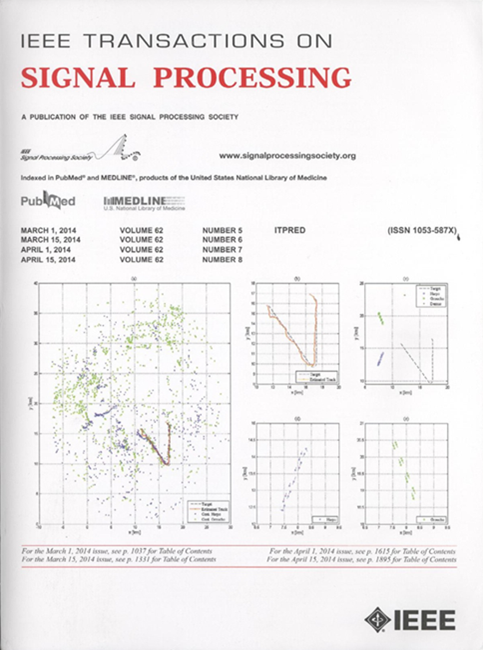Joint Design of Doppler Resilient Unimodular Discrete Phase Sequence Waveform and Receiving Filter for Multichannel Radar
IF 5.8
2区 工程技术
Q1 ENGINEERING, ELECTRICAL & ELECTRONIC
引用次数: 0
Abstract
Design of discrete phase sequence waveform (DPSW) with desirable co- and cross-ambiguity function (AF) properties has been a longstanding and critical challenge in the field of high-performance multichannel electronic systems, e.g. radar systems. This paper focuses on the joint design of Doppler-resilient DPSW and receiving filter with low weighted integrated sidelobe level (WISL) for multichannel radar system. This design aims to construct DPSWs of “thumbtack” shape and all-zero AFs within the desired Range-Doppler region for both co-channels and cross-channels, respectively. A peak constraint function, i.e. the penalty function, is incorporated into the objective function to control the signal-to-noise ratio loss (SNRL) due to mismatched filtering. In the design, unimodular and discrete phase constraints are imposed on each element of the sequences, while the receiving filters are subject to the energy constraint and the mismatch constraint of SNRL. Different constraints on transmitted sequences and receiving filters make the optimization problem difficult to solve. Here, an alternatively iterative algorithm based on the majorization-minimization (MM) and the coordinate descent (CD) frameworks is proposed to handle the differently constrained optimization problem. Moreover, by incorporating a general acceleration scheme and the fast Fourier transform (FFT), the computational efficiency of the proposed algorithm can be further improved. Simulation and practical experiments are conducted to validate the designed DPSWs showing superior performance when compared to that by the latest and representative methods.为多通道雷达联合设计多普勒弹性单模块离散相序波形和接收滤波器
在高性能多通道电子系统(如雷达系统)领域,设计具有理想的同相位和跨相位模糊函数(AF)特性的离散相序波形(DPSW)是一项长期而严峻的挑战。本文的重点是为多通道雷达系统联合设计抗多普勒的 DPSW 和具有低加权综合侧叶电平(WISL)的接收滤波器。该设计旨在构建 "拇指 "形状的 DPSW,并在所需的同信道和跨信道范围-多普勒区域内分别实现全零 AF。在目标函数中加入了峰值约束函数,即惩罚函数,以控制由于不匹配滤波造成的信噪比损失(SNRL)。在设计中,序列的每个元素都受到单模态和离散相位约束,而接收滤波器则受到能量约束和信噪比失配约束。传输序列和接收滤波器的约束条件不同,使得优化问题难以解决。在此,提出了一种基于大化最小化(MM)和坐标下降(CD)框架的交替迭代算法,以处理不同约束的优化问题。此外,通过采用通用加速方案和快速傅立叶变换(FFT),还能进一步提高所提算法的计算效率。通过仿真和实际实验,验证了所设计的 DPSW 与最新的代表性方法相比具有更优越的性能。
本文章由计算机程序翻译,如有差异,请以英文原文为准。
求助全文
约1分钟内获得全文
求助全文
来源期刊

IEEE Transactions on Signal Processing
工程技术-工程:电子与电气
CiteScore
11.20
自引率
9.30%
发文量
310
审稿时长
3.0 months
期刊介绍:
The IEEE Transactions on Signal Processing covers novel theory, algorithms, performance analyses and applications of techniques for the processing, understanding, learning, retrieval, mining, and extraction of information from signals. The term “signal” includes, among others, audio, video, speech, image, communication, geophysical, sonar, radar, medical and musical signals. Examples of topics of interest include, but are not limited to, information processing and the theory and application of filtering, coding, transmitting, estimating, detecting, analyzing, recognizing, synthesizing, recording, and reproducing signals.
 求助内容:
求助内容: 应助结果提醒方式:
应助结果提醒方式:


